In the world of food, there are some spices that are very hard to find and are talked about quietly by people who love cooking. These special spices make our food taste extra special. Let’s explore together and learn about 30 of these rare spices from different parts of the world.
1. Asafeotida

Origin: Asafeotida, also known as hing in India. It’s a dried latex (gum oleoresin) exuded from the rhizome or tap root of several species of Ferula, perennial herbs of the carrot family. It is found in Iran and Afghanistan.
Use: Asafoetida has a strong, pungent odor reminiscent of garlic and onions, but its flavor mellows and becomes more subtle when cooked. It is commonly used in vegetarian dishes, lentil curries, and pickles to enhance the flavor and aid in digestion.
In addition to its culinary uses, asafoetida has a long history of medicinal use in traditional medicine systems like Ayurveda. It is believed to have digestive, anti-inflammatory, and antimicrobial properties. It’s often added to hot oil or ghee at the beginning of cooking to release its aroma and flavor.
2. Sumach

Origin: Sumacs are dioecious shrubs and small trees in the family Anacardiaceae that can reach a height of one to ten metres (3–33 ft). It’s commonly found in the Middle East and Mediterranean regions. Its flavor profile is tart and slightly fruity, reminiscent of lemon, but with a more complex and earthy undertone.
Use: This reddish-purple spice is commonly used as a seasoning in Middle Eastern and Mediterranean cuisines, where it adds a zesty and acidic kick to dishes. It’s often sprinkled over salads, grilled meats, rice dishes, or even used as a flavoring for dips like hummus and yogurt-based sauces.
3. Kokum

Origin: Binomial name Garcinia indica. It grows primarily in India’s Western Ghats: in the states of Maharashtra, Goa, Karnataka and Kerala.
Use: It adds a subtle tanginess to dishes without overpowering other flavors, making it a versatile ingredient in a variety of recipes.
In traditional Indian cooking, kokum is often used in fish curries, dals (lentil soups), and vegetable dishes. It enhances the overall flavor profile of the dish and provides a refreshing acidity. Kokum is also used to prepare refreshing summer beverages and sherbets, thanks to its cooling properties.
Beyond its culinary uses, Kokum also used as medicinal in Ayurvedic and traditional Indian medicine. It helps to aid digestion, alleviate acidity, and cool the body during hot weather. Additionally, kokum is rich in antioxidants and may have potential health benefits.
4. Nutmeg
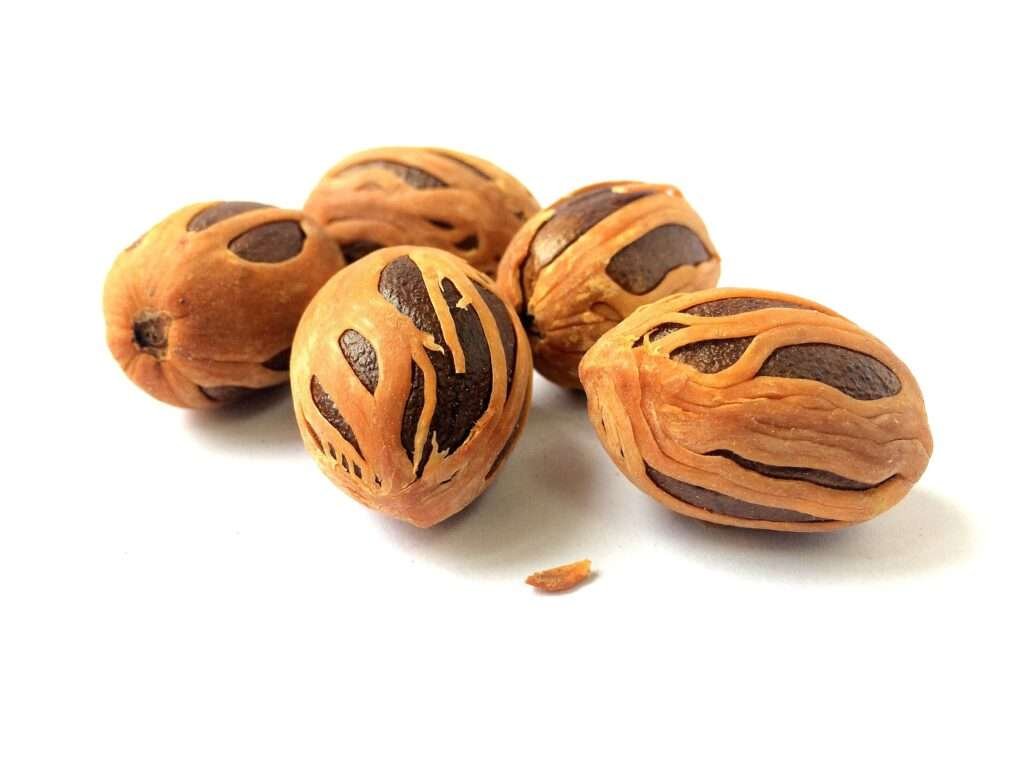
Origin: Nutmeg is a unique spice derived from the seed of the nutmeg tree, native to the Banda Island of Indonesia. It’s farmed for warm, sweet, and slightly spicy flavor, making it a versatile ingredient in both sweet and savory dishes.
Use: Nutmeg is a versatile spice used in both sweet and savory dishes. It adds depth and warmth to dishes like custards, pies, cakes, and puddings, as well as savory dishes like soups, stews, and sauces. It also plays an important role in Biryani recipes.
5. Mace
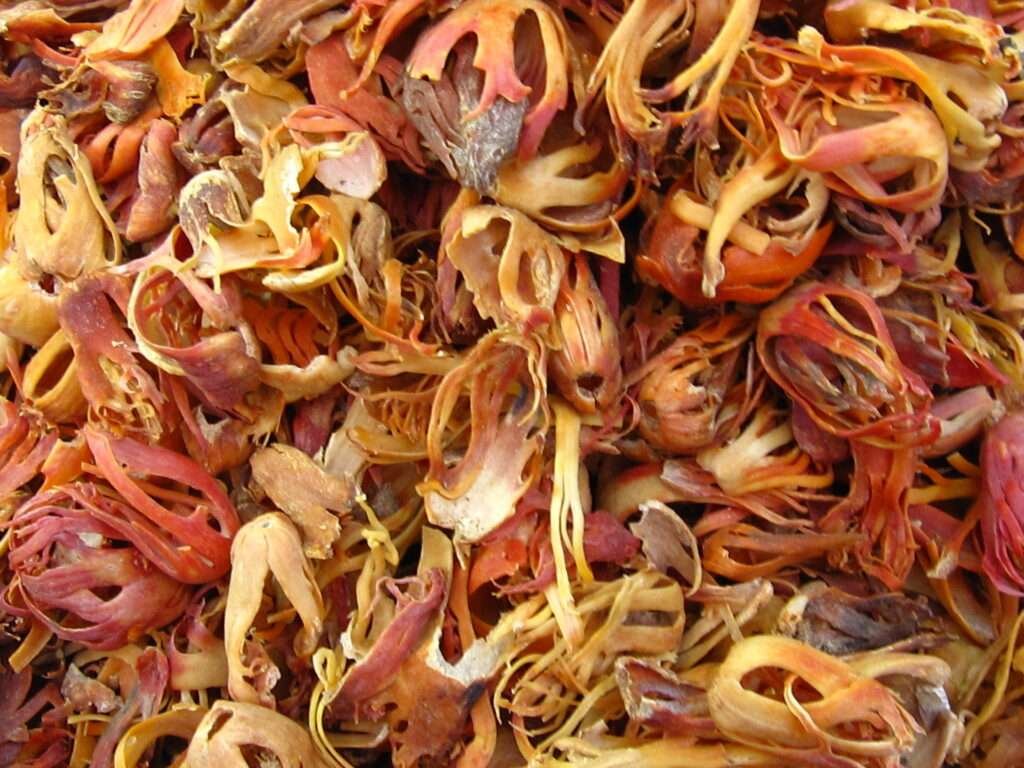
Origin: Mace is a spice that comes from the same plant as nutmeg, the nutmeg tree (Myristica fragrans). Specifically, mace is the dried outer covering of the nutmeg seed. It is obtained by carefully removing the reddish-orange aril or “lacy” covering that surrounds the hard, dark brown nutmeg seed.
Use: Mace is used as a flavoring agent and coloring agent in both sweet and savory dishes, although it’s less common than nutmeg in many recipes. It adds depth and complexity to dishes like soups, stews, sauces, and marinades, as well as baked goods, desserts, and beverages. Additionally, mace is a key component in spice blends such as garam masala and curry powder.
6. Grains of Paradise


Origin: Grains of Paradise, also known as alligator pepper, Guinea pepper, or Aframomum melegueta, is a spice native to West Africa, particularly the Gulf of Guinea region. It comes from the seeds of the Aframomum melegueta plant, which is a member of the ginger family. Grains of Paradise have a long history of culinary and medicinal use in African and Middle Eastern cuisines.
Use: Grains of Paradise can be used whole or ground, and they are often employed as a spice in spice blends, marinades, rubs, and sauces. They can add depth and complexity to dishes such as grilled meats, seafood, stews, soups, and vegetable dishes. Additionally, Grains of Paradise are sometimes used in baking, particularly in gingerbread and other spiced desserts.
7. Juniper Berries

Origin: Juniper berries come from various species of juniper trees and shrubs, primarily from the plant species Juniperus communis. These plants are native to the Northern Hemisphere and can be found growing wild in regions such as Europe, Asia, and North America.
Use: Historically, juniper berries have been used by various cultures for culinary, medicinal, and ceremonial purposes for centuries. They have been a particularly important ingredient in European cuisine, where they are used to flavor meats, sauces, and alcoholic beverages like gin.
8. Black Cumin

Origin: Black cumin, scientifically known as Nigella sativa, is a flowering plant native to southwest Asia, the Mediterranean, and Africa. It belongs to the Ranunculaceae family and is sometimes referred to by various other names, including black seed, black caraway, or kalonji.
Use: Black cumin seeds have been used for culinary, medicinal, and cosmetic purposes for thousands of years. In cooking, they are commonly used as a spice and flavoring agent in a variety of dishes, particularly in Middle Eastern, Indian, and North African cuisines. They can be used whole, ground, or toasted, and are often added to bread, rice dishes, curries, pickles, and salads.
9. Long Pepper

Origin: Long pepper, scientifically known as Piper longum, is a flowering vine in the Piperaceae family, which also includes black pepper. Native to India, long pepper is cultivated in various tropical regions of Asia, including Indonesia, Malaysia, and Thailand. It has been used for centuries in traditional Asian medicine and cuisine.
Use: Long pepper has been used in culinary applications for its unique flavor profile and medicinal properties. It is commonly used as a spice and seasoning in traditional Asian cuisines, particularly in Indian and Southeast Asian dishes. Long pepper is often used whole or ground to add depth and heat to curries, stews, sauces, and pickles.
10. Nigella Seed

Origin: Nigella seeds, also known as black cumin, black caraway, or kalonji, come from the plant Nigella sativa, which is native to southwest Asia, the Mediterranean, and Africa. These small, angular seeds are jet black and have a distinctive, slightly bitter, peppery flavor with hints of onion, oregano, and black pepper. They are often used as a spice and flavoring agent in various cuisines, particularly in Middle Eastern, Indian, and North African dishes.
Use: Nigella seeds are commonly used in cooking to add flavor and aroma to a wide range of dishes. They can be used whole, toasted, or ground, and are often sprinkled on breads, pastries, and savory dishes such as curries, lentil dishes, vegetables, and salads. Nigella seeds are also a key ingredient in various spice blends, such as the Bengali spice mix panch phoron and the Middle Eastern spice blend za’atar.
11. Annatto seed

Origin: Annatto seeds, also known as achiote seeds, come from the fruit of the annatto tree (Bixa orellana), which is native to tropical regions of the Americas, particularly Central and South America.
Use: In addition to their use as a food coloring, annatto seeds also have a mild, slightly peppery taste with hints of nutmeg and cinnamon. They are used as a spice in various dishes, including stews, soups, rice dishes, sauces, marinades, and meat preparations.
12. Wattle Seed

Origin: Wattle seed refers to the edible seeds of various species of acacia trees, commonly known as wattles, which are native to Australia.
Use: In terms of culinary use, wattle seeds can be roasted and ground into a fine powder, which can then be incorporated into a wide range of dishes. The ground wattle seed powder adds depth and complexity to both sweet and savory dishes, with flavors reminiscent of coffee, chocolate, hazelnut, and roasted grains.
In Australian cuisine, wattle seed is used in various dishes, including bread, cakes, biscuits, ice cream, custards, and sauces. It can also be used as a seasoning for meats, poultry, and seafood, as well as in marinades, rubs, and dressings.
13. Pasilla de Oaxaca Chile

Origin: Pasilla de Oaxaca chile is a type of chili pepper originating from the Oaxaca region of Mexico. It is prized for its rich, smoky flavor and mild to medium heat level, making it a popular ingredient in Mexican cuisine, particularly in the state of Oaxaca.
Use: Pasilla de Oaxaca chile is a versatile ingredient in Mexican cooking and is used to flavor a variety of dishes, including salsas, moles, soups, stews, and marinades. It can also be used to add depth and smokiness to sauces, rubs, and marinades for grilled meats, poultry, seafood, and vegetables.
14. Dried Kaffir Lime Leaves

Origin: Dried kaffir lime leaves are a popular ingredient in Southeast Asian cuisine, particularly in Thai, Indonesian, and Malaysian cooking. These leaves come from the kaffir lime tree (Citrus hystrix), which is native to tropical regions of Asia.
Use: In culinary applications, dried kaffir lime leaves are typically used whole or crushed to release their essential oils. They are added to soups, curries, stir-fries, marinades, and sauces to infuse dishes with their distinctive citrus flavor. Dried kaffir lime leaves are particularly prized for their ability to enhance the taste of coconut-based dishes, such as coconut milk curries and soups.
15. Galangal

Origin: Galangal is a rhizomatous root that belongs to the ginger family (Zingiberaceae). It is native to Southeast Asia and is widely used in the cuisines of Thailand, Indonesia, Malaysia, and other parts of Asia. Galangal has a unique flavor and aroma that is distinct from ginger, although the two are related.
Use: In terms of flavor, galangal has a pungent, citrusy, and slightly spicy taste with floral and earthy undertones. It is often described as having a more complex and aromatic flavor profile compared to ginger. Galangal is used as a key ingredient in many Southeast Asian dishes, including curries, soups, stir-fries, and marinades. It is also used to flavor sauces, condiments, and beverages.
16. Mahlab
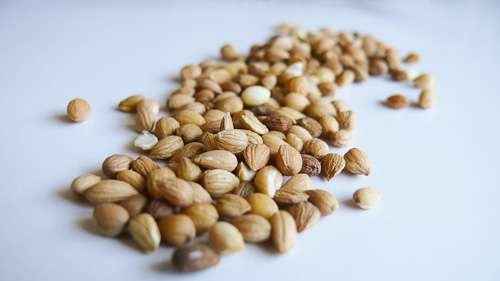
Origin: Mahlab, also spelled as mahleb or mahaleb, is a spice derived from the seeds of the St. Lucie cherry (Prunus mahaleb) tree, which is native to regions of the Mediterranean, the Middle East, and Western Asia. The spice is particularly popular in Middle Eastern and Mediterranean cuisines, where it is used for its unique flavor and aroma.
Use: In culinary applications, mahlab is commonly used as a flavoring agent in baked goods and desserts. It is a key ingredient in traditional Middle Eastern and Mediterranean pastries, breads, cookies, and cakes. Mahlab adds depth and complexity to these dishes, enhancing their flavor and aroma with its unique profile.
17. Fenugreek

Origin: Fenugreek, scientifically known as Trigonella foenum-graecum, is an herbaceous plant belonging to the Fabaceae family. Native to the Mediterranean region and Western Asia, fenugreek is now cultivated worldwide for its culinary, medicinal, and nutritional properties.
Use: In culinary applications, fenugreek seeds are a common ingredient in spice blends such as curry powder, garam masala, and berbere. They are also used to flavor pickles, chutneys, sauces, and vegetable dishes. When cooked, fenugreek seeds develop a rich, savory flavor that adds depth and complexity to a wide range of dishes.
18. Sweet Flag

Origin: Sweet flag, scientifically known as Acorus calamus, is a perennial herbaceous plant native to wetlands and marshy areas of Europe, Asia, and North America. Also known as calamus, it is characterized by its tall, reed-like stems and long, sword-shaped leaves.
Use: Sweet flag has a long history of use in traditional medicine and culinary practices. In traditional herbal medicine, sweet flag has been used for its potential digestive, stimulating, and calming properties. It has been employed to alleviate gastrointestinal discomfort, stimulate appetite, and promote relaxation.
In culinary applications, the rhizome of sweet flag is sometimes used as a flavoring agent in certain dishes, particularly in Asian cuisine. It can be sliced or grated and added to soups, stews, and curries to impart its aromatic flavor.
19. Serrano Chili Powder

Origin: Serrano chili powder is a spice made from grinding dried serrano peppers (Capsicum annuum var. serrano), which are a type of chili pepper originating from the mountainous regions of Mexico. Serrano peppers are known for their vibrant green color when fresh and their medium to hot level of spiciness, which ranges from 10,000 to 23,000 Scoville Heat Units (SHU).
Use: In culinary applications, serrano chili powder is a versatile spice that adds heat and flavor to a wide range of dishes. It is commonly used in Mexican, Tex-Mex, and Southwestern cuisines to season salsas, sauces, marinades, rubs, and meat dishes. Serrano chili powder can also be sprinkled on top of tacos, soups, stews, and grilled vegetables to add a fiery kick.
20. Ceylon Cinnamon

Origin: Ceylon cinnamon, also known as “true cinnamon,” is a type of cinnamon derived from the inner bark of the Cinnamomum verum tree, which is native to Sri Lanka (formerly Ceylon), Madagascar, and the Seychelles. It is considered to be of higher quality and superior flavor compared to the more common cassia cinnamon.
Use: In terms of flavor and aroma, Ceylon cinnamon is characterized by its sweet, subtle, and complex taste with hints of citrus and floral notes. It is less pungent and spicy than cassia cinnamon, making it ideal for delicate desserts, beverages, and dishes where a milder cinnamon flavor is desired.
21. Saigon Cinnamon

Origin: Saigon cinnamon, also known as Vietnamese cinnamon or Cinnamomum loureiroi, is a type of cinnamon derived from the inner bark of the Cinnamomum loureiroi tree, which is native to Southeast Asia, particularly Vietnam.
Use: Saigon cinnamon is distinguished by its deep reddish-brown color and its thick, coarse bark, which contains high levels of essential oils. These oils give Saigon cinnamon its potent flavor and aroma, which is characterized by its spicy, sweet, and slightly floral notes.
In culinary applications, Saigon cinnamon is commonly used in both sweet and savory dishes, particularly in Southeast Asian cuisines such as Vietnamese, Thai, and Indonesian. It is often used to flavor desserts such as cakes, pastries, and puddings, as well as savory dishes like curries, stews, and marinades. Saigon cinnamon is also a popular choice for adding warmth and spice to beverages such as hot chocolate, coffee, and mulled wine.
22. Fennel Pollen
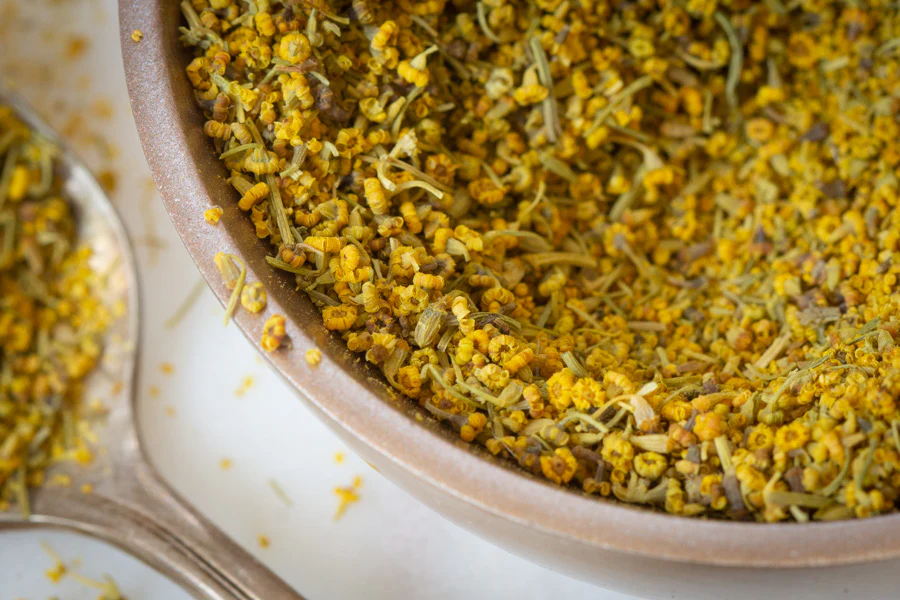
Origin: Fennel pollen is a highly aromatic spice derived from the flowers of the fennel plant (Foeniculum vulgare). It is prized for its intense flavor and complex aroma, which combines the sweet, licorice-like taste of fennel with floral and herbaceous notes.
Use: Fennel pollen is a versatile spice that can be used in a variety of culinary applications. It can be sprinkled over dishes as a finishing touch to add a burst of flavor and aroma. It pairs well with seafood, poultry, pork, and vegetables, and can be used to season salads, soups, sauces, and marinades.
23. Dried Avocado Leaves

Origin: Dried avocado leaves are a flavorful and aromatic herb derived from the leaves of the avocado tree (Persea americana). These leaves are commonly used in Mexican and Central American cuisines to add a distinctive flavor to a variety of dishes.
Use: In terms of flavor, dried avocado leaves have a subtle anise-like taste with hints of licorice, mint, and citrus. They also have a slightly floral aroma that adds depth and complexity to dishes. While the leaves themselves are not typically eaten, they are used to infuse dishes with their unique flavor and fragrance during the cooking process.
Dried avocado leaves are commonly used in traditional Mexican dishes such as tamales, mole sauces, soups, and stews.
24. Wasabi Root
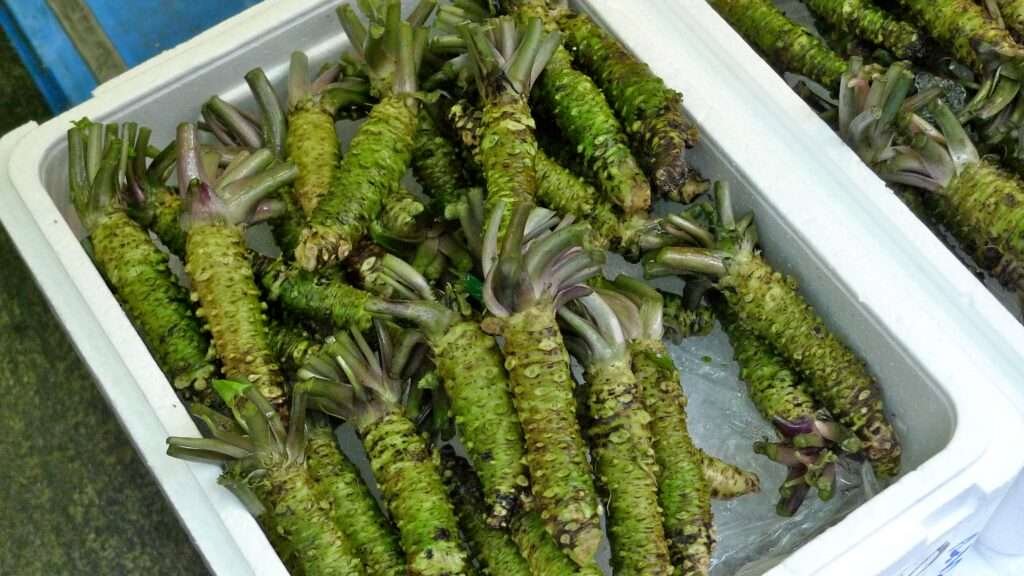
Origin: Wasabi grows naturally in cool, mountainous regions with clean, flowing water. It is cultivated primarily in Japan, but also in other countries with suitable climates, such as New Zealand and parts of North America. The plant is a member of the Brassicaceae family, which includes other pungent vegetables like mustard and horseradish.
Use: Authentic wasabi paste is highly valued for its intense flavor and aroma, as well as its ability to provide a distinctive heat that dissipates quickly, leaving behind a refreshing sensation. It is commonly served as a condiment with sushi, sashimi, and other Japanese dishes, where it adds depth and complexity to the flavor profile of the food.
25. Black truffle Salt

Origin: Black truffle salt is a gourmet seasoning made by infusing sea salt with finely ground black truffles, which are highly prized edible fungi known for their rich, earthy flavor and distinctive aroma. This luxurious salt offers a unique way to incorporate the complex taste of black truffles into dishes without the need for expensive fresh truffles.
Use: Black truffle salt is prized for its robust flavor profile, which combines the savory, umami-rich notes of black truffles with the natural minerality of sea salt. The earthy, mushroom-like taste of the truffles adds depth and complexity to dishes, while the salt enhances and balances the flavors.
26. Ghost Chili Powder
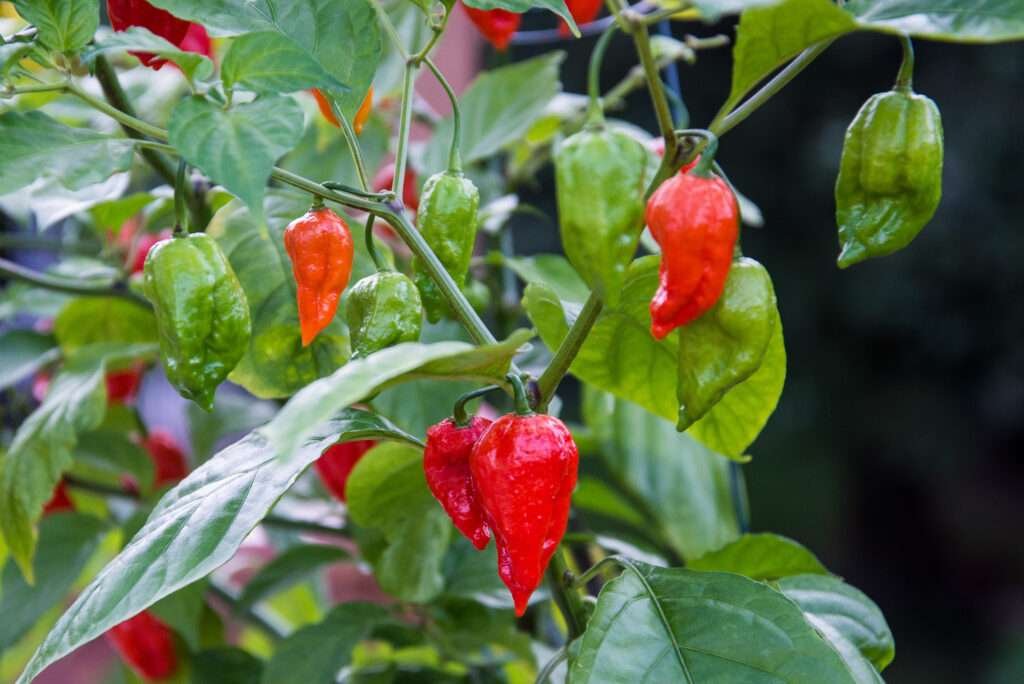
Origin: Ghost chili powder, also known as Bhut Jolokia powder, is made from grinding dried Bhut Jolokia peppers, which are among the hottest chili peppers in the world. Bhut Jolokia peppers, also known as ghost peppers, originate from the Northeastern regions of India, particularly Assam, Nagaland, and Manipur.
Use: Ghost chili powder is renowned for its extreme heat, which can range from 800,000 to over 1,000,000 Scoville Heat Units (SHU), making it one of the hottest chili powders available. Due to its extreme heat, ghost chili powder should be used sparingly and with caution. Even a small amount can add a significant amount of heat to dishes. It is commonly used to add intense spiciness to salsas, hot sauces, chili con carne, and other spicy dishes. Ghost chili powder can also be used to create homemade spice blends or to add heat to marinades and rubs for grilled meats.
27. Vanilla Paste

Vanilla paste is a concentrated form of vanilla flavoring that contains both the flavorful seeds and the aromatic compounds found in vanilla beans. It is made by combining vanilla bean seeds with a sweet syrup or other liquid base, resulting in a thick, viscous paste with a rich, complex flavor profile.
Use: To create vanilla paste, whole vanilla beans are split open, and the seeds are scraped out using a knife or spoon. These seeds are then mixed with a sweetener, such as sugar, corn syrup, or honey, along with other ingredients such as glycerin or xanthan gum to create a thick, spreadable consistency. Vanilla paste is a versatile ingredient that can be used in a variety of culinary applications. It is commonly used to flavor baked goods such as cakes, cookies, and muffins, where it adds depth and complexity to the finished product. It can also be stirred into custards, puddings, ice creams, and sauces, or added to beverages such as coffee, tea, or hot chocolate for a touch of sweetness and aroma.
28. Black Cardamom

Origin: Black cardamom, also known as hill cardamom, Bengal cardamom, or greater cardamom, is a spice derived from the pods of the Amomum subulatum plant, which is native to several regions in Asia, including India, Nepal, Bhutan, and China. It is one of the two main types of cardamom used in cooking, the other being green cardamom.
Use: Black cardamom pods contain small seeds that are typically used whole or lightly crushed in cooking. They are commonly added to savory dishes such as curries, stews, soups, and rice pilafs to impart their distinctive flavor and aroma. Black cardamom is particularly popular in North Indian cuisine, where it is used as a key ingredient in spice blends such as garam masala.
29. Szechuan Peppercorns

Szechuan peppercorns, also spelled Sichuan peppercorns, are a key ingredient in Chinese cuisine, particularly in the Sichuan province, from which they derive their name. Despite their name, Szechuan peppercorns are not true peppercorns but rather the dried husks of the prickly ash tree’s fruit.
Use: Szechuan peppercorns are typically used whole or ground to add flavor and heat to dishes. They are a key ingredient in many traditional Szechuan dishes, such as mapo tofu, kung pao chicken, and Szechuan hot pot. The peppercorns are often dry-roasted before use to enhance their aroma and flavor.
30. Saffron
Origin: Saffron has ancient origins, dating back thousands of years to regions of Southwest Asia, particularly Persia (modern-day Iran). It is believed to have been cultivated and traded in this region since antiquity, with evidence of its use found in ancient Egyptian, Greek, and Roman texts.
Use: Saffron is prized for its distinctive flavor, aroma, and vibrant color. It has a floral, honey-like taste with hints of bitterness, and imparts a rich golden-yellow hue to dishes when added during cooking. Saffron is commonly used to flavor and color a wide range of dishes, including rice dishes such as paella and risotto, as well as soups, stews, sauces, and desserts.
These 30 rare spice treasures are not just ingredients; they are windows into diverse cultures, histories, and culinary traditions from around the world. As you embark on your culinary adventures, consider incorporating these uncommon flavors to elevate your dishes and tantalize your taste buds with the richness of global gastronomy.
